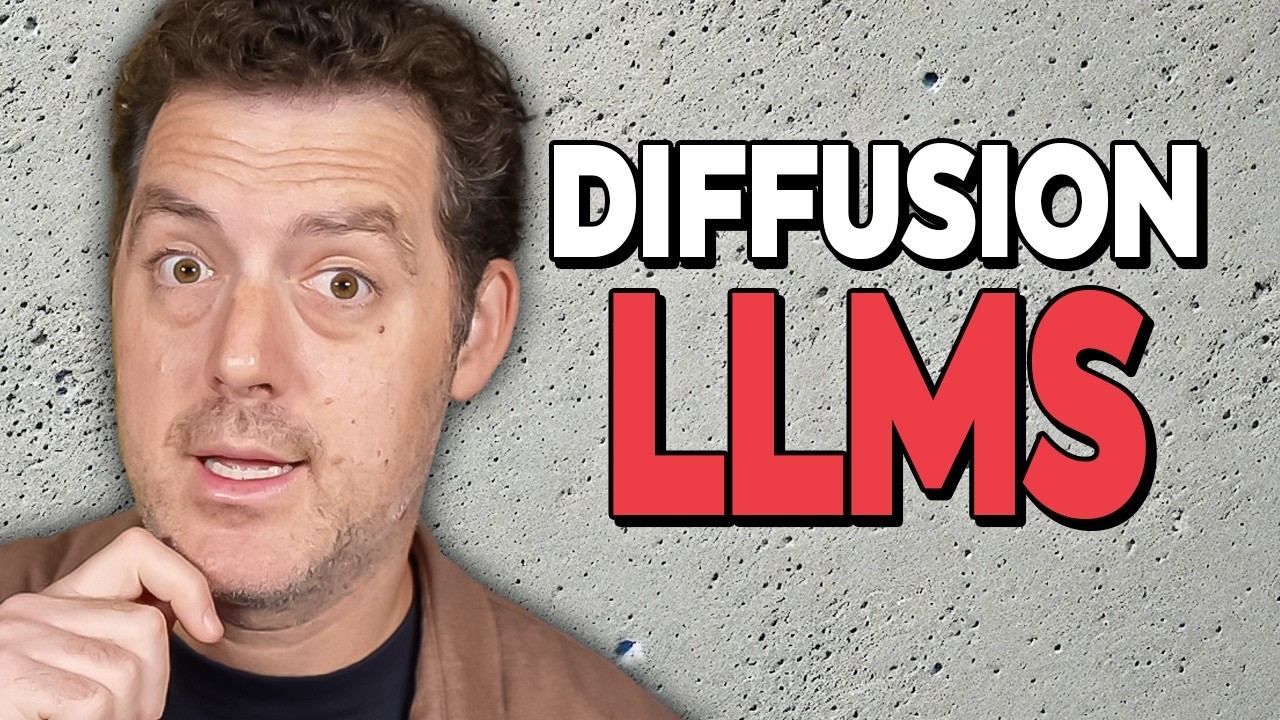The video introduces diffusion LLMs, a new type of large language model developed by Inception Labs that generates entire outputs at once and refines them iteratively, making it ten times faster and more cost-effective than traditional autoregressive models. This innovative approach enhances reasoning, error correction, and overall output quality, revolutionizing tasks like coding and improving the efficiency of AI agents.
The video discusses a groundbreaking advancement in large language models (LLMs) known as diffusion LLMs, developed by Inception Labs. This new approach claims to be ten times faster and less expensive than traditional autoregressive models. Traditional LLMs generate text sequentially, producing one token at a time, which can lead to significant delays in response time. In contrast, diffusion LLMs generate an entire response at once in a rough form and then iteratively refine it, similar to how diffusion models work in text-to-image generation. This innovative method allows for rapid output generation and refinement, drastically improving efficiency.
The video highlights the performance of the diffusion LLM, which operates at an impressive speed of over 1,000 tokens per second on standard hardware, such as the Nvidia H100. This speed enables the model to handle complex tasks, such as coding, much more efficiently than previous models. The presenter demonstrates the model’s capabilities by generating code snippets in mere seconds, showcasing its potential to revolutionize coding workflows. The ability to generate and refine outputs quickly could significantly reduce the time users spend waiting for results, making it a game-changer in various applications.
One of the key advantages of diffusion LLMs is their ability to improve reasoning and error correction. Unlike traditional models that rely on previous outputs to generate the next token, diffusion models can consider the entire output simultaneously, allowing for better structuring and correction of mistakes. This capability enhances the overall quality of the generated text and opens up new possibilities for more advanced reasoning tasks. The video emphasizes that this new architecture not only increases speed but also has the potential to produce higher-quality outputs.
The presenter also discusses the implications of this technology for AI agents, which can now operate more efficiently due to the increased speed of the model. Faster inference allows agents to perform more complex tasks and reasoning within a shorter timeframe, ultimately leading to improved performance. Additionally, the controllable generation aspect of diffusion LLMs enables users to edit outputs and align them with specific objectives, enhancing the model’s versatility and usability in various contexts.
Finally, the video touches on the broader significance of this development in the field of artificial intelligence. The presenter notes that while diffusion models have been widely adopted in image and video generation, text generation has lagged behind until now. The introduction of diffusion LLMs could lead to new behaviors and capabilities in intelligent models, prompting further exploration and experimentation. The video concludes with an invitation for viewers to try out the new model and a suggestion to check out related research papers, highlighting the excitement surrounding this innovative approach to language modeling.
